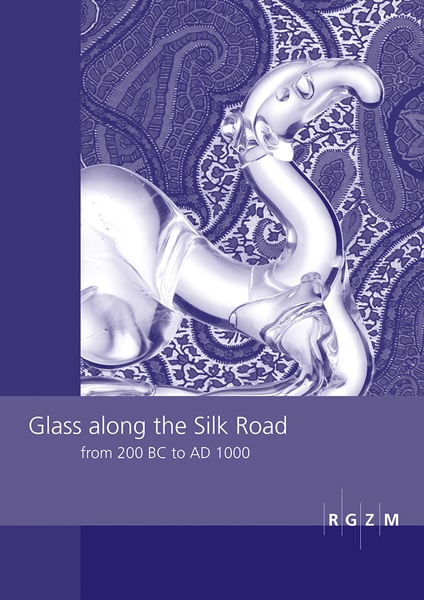Es befinden sich keine Produkte im Warenkorb.
Glass along the Silk Road from 200 BC to AD 1000
International Conference within the scope of the »Sino-German Project on Cultural Heritage Preservation« of the RGZM and the Shaanxi Provincial Institute of Archaeology, December 11th-12th 2008
The current state of research on glass along the Silk Road was the subject of an international conference within the scope of the "Sino-German Project on Cultural Heritage Preservation" of the RGZM and the Shaanxi Provincal Institute of Archaeology, hosted in December 2008 in Mainz.
Lieferzeit: ca. 2-3 Werktage
Since Antiquity the routes of the so-called Silk Road formed an important network for commercial, cultural and technological exchange. Far-reaching and criss-crossing the Asian continent they connected eastern and south-eastern parts of Asia to the Mediterranean world via both maritime and overland routes. Named after the lucrative silk trade, which developed during Han Dynasty, one tends to think of the Silk Road as a one-way road starting in China and ending at the Mediterranean. However, goods, technologies and ideas were travelling in both directions, and glass is an excellent example for a trade-good that arrived in the East from the West. The key developments of glass, which had its origins in the Middle and Near East, mainly took place in the Mediterranean and in the Arab World during Antiquitiy and Islamic times. Althouth known in the Far East since at least the Han Dynasty and treated as equivalent to precious stones, glass never played a significant role in Far Eastern cultures. Therefore glass finds from Far Eastern sites provide evidence for far-reaching trade-relationships and imply cross-fertilization with other cultures. Thus the contributions to this conference dealt with a geographical area between Western Europe, the Balkans, the Near East, Central Asia, as well as Eastern and Southeastern Asia and covered a chronological range from 200 BC to AD 1000. The conference focused on the one hand on recent results of scientific analyses of glass and on the other hand on archaeological questions. The possibilty of interdisciplinary research was one of the focal points of the conference and hence this volume, as well as questions on workshops, raw material, technology and trade. The international conference was considered to provide the participants with an insight beyond their own immediate concerns. By means of presenting studies of regionally-speficic glass forms and techniques, as well as current methods and discoveries, even when not directly conne
Folgende Downloads stehen für diesen Titel zur Verfügung:




